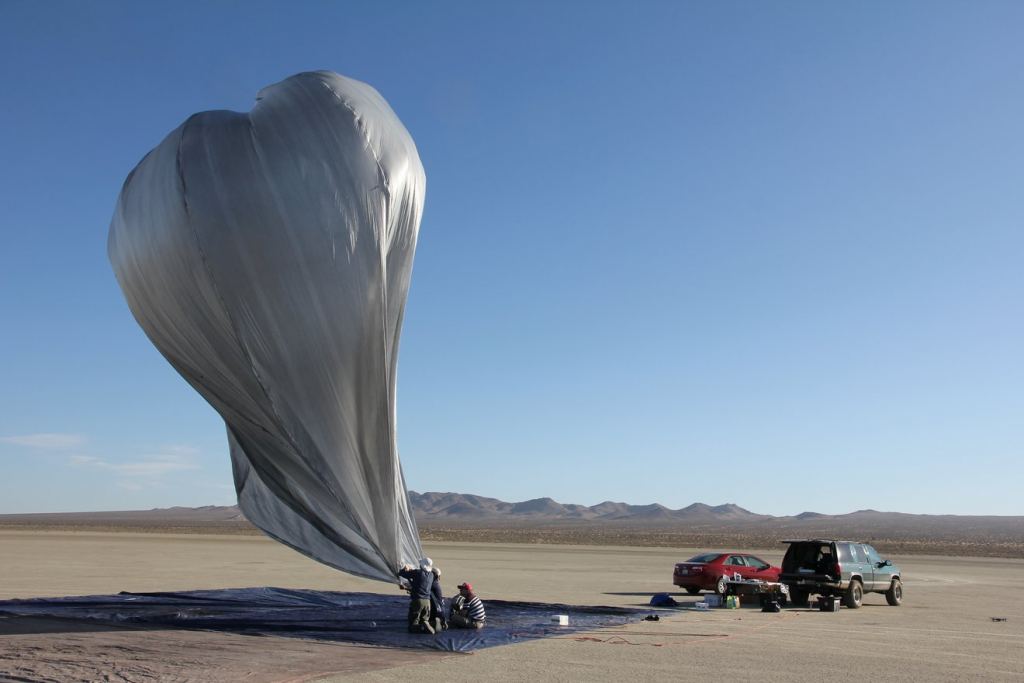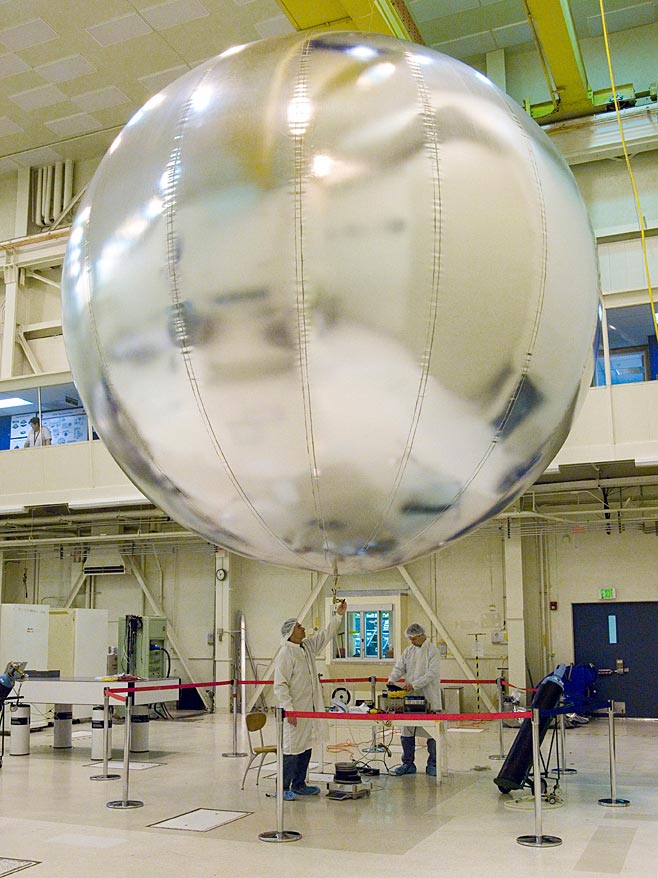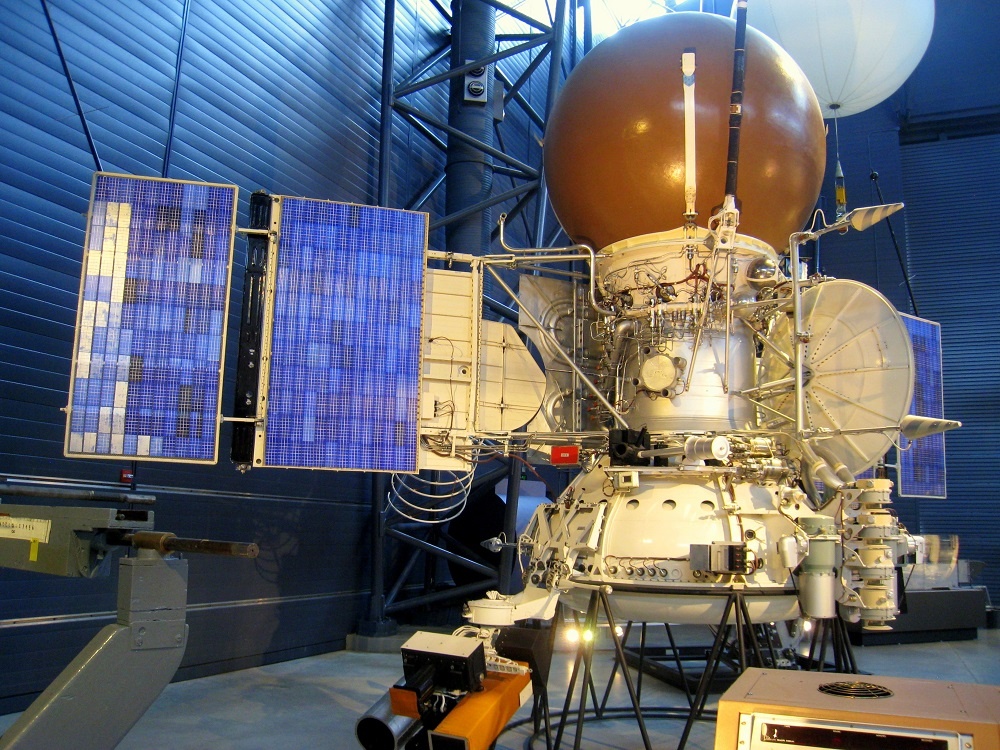An opportunity in 2019 lays the groundwork for balloon-borne detectors on Venus, working to unravel a key mystery.
The skies of Venus may become a busy place in the coming decade, using technology field-tested here on Earth.
A team out of NASA JPL-Caltech hypothesized that terrestrial earthquakes should also produce low-frequency infrasonic sound waves, which would be transmitted from the ground through the atmosphere as changes in barometric pressure. These sound waves, while difficult to detect, should be measurable via highly sensitive barometers carried aloft.
 One of the balloons from the study, in the field. NASA/JPL-Caltech
One of the balloons from the study, in the field. NASA/JPL-CaltechThe team had a chance to put this idea to the test in 2019. In early July, a series of powerful earthquakes rattled the town of Ridgecrest, California. This was followed by over 10,000 aftershocks over the following six-week period. This gave the team the chance to fly instruments aboard four heliotrope balloons, rising to about 18 to 24 kilometers altitude with the warmth of the daytime Sun, and settling back to Earth at night.
Previous experiments detected deliberate human-made earthquakes caused by seismic hammers or explosives, but parsing out faint low frequency waves is magnitudes more difficult. Environmental noise—to include vibrations from the balloons themselves—all had to be accounted for.
The team got a break on July 22nd, when they detected a 4.2 magnitude aftershock. Multiple readings from separate balloons pinpointed the event, which was verified by ground sensors. The results were published in the June 2021 edition of Geophysical Research: Letters.
The Riddle of Venusian Geology
But the NASA-JPL team has loftier ambitions, such as putting balloon-borne barometric sensors floating in the atmosphere of Venus to solve a key mystery: was the planet active in the past, and is it currently active today?
“Much of our understanding about Earth’s interior – how it cools and its relationship to the surface, where life resides – comes from the analysis of seismic waves that traverse regions as deep as Earth’s inner core,” says Jennifer Jackson (Caltech Seismological Laboratory) in a recent press release. “Tens of thousands of ground-based seismometers populate spatially-dense or permanent networks, enabling this possibility on Earth. We don’t have this luxury on other planetary bodies… Venus’ extreme environment requires us to investigate novel detection techniques.”
 An artist’s conception of a balloon plying the skies of Venus. Credit: NASA/JPL-Caltech
An artist’s conception of a balloon plying the skies of Venus. Credit: NASA/JPL-CaltechUsing a Balloon to Detect Quakes… on Venus
The idea is to use measurement of barometric pressure changes aloft, to detect quakes below. The good news is, though conditions on the Venusian surface are hellish, things are much more balmy in the planet’s upper atmosphere. Whereas a lander on Venus will succumb to the high temperature and terrific pressure on the surface of the planet after mere hours, a balloon-based platform could operate for weeks or even months. A network of balloon style barometric stations could go a long way towards understanding the enigmatic Venusian interior.
 A Venus balloon prototype in the lab on Earth. Credit: NASA/JPL-Caltech
A Venus balloon prototype in the lab on Earth. Credit: NASA/JPL-CaltechVenus Exploration: Past, Present and Future
The Soviet Union paved the way for the exploration of Venus, with the successful Venera series of landers. The Soviets also fielded the first successful interplanetary balloon missions Vega 1 and 2 in 1986.
 A full scale model of a Vega comet flyby mission w/Venus decent package, at the Udvar-Hazy Center on Earth. Public Domain.
A full scale model of a Vega comet flyby mission w/Venus decent package, at the Udvar-Hazy Center on Earth. Public Domain.Though NASA hasn’t been to Venus since the end of the Magellan orbiter mission in 1994, the agency plans to send the VERITAS and DAVINCI+ missions to Venus in the coming decade. More exotic ideas include such things as a steam punk-style windup rover, powered by the wind.
It will be intriguing to see balloon missions one day plying the Venusian skies. But for now, terrestrial balloon missions will pave the way for space-based technology, here on Earth.

